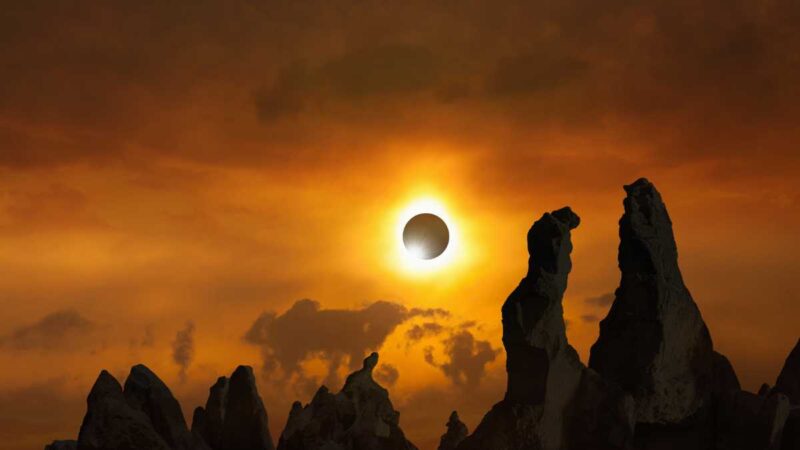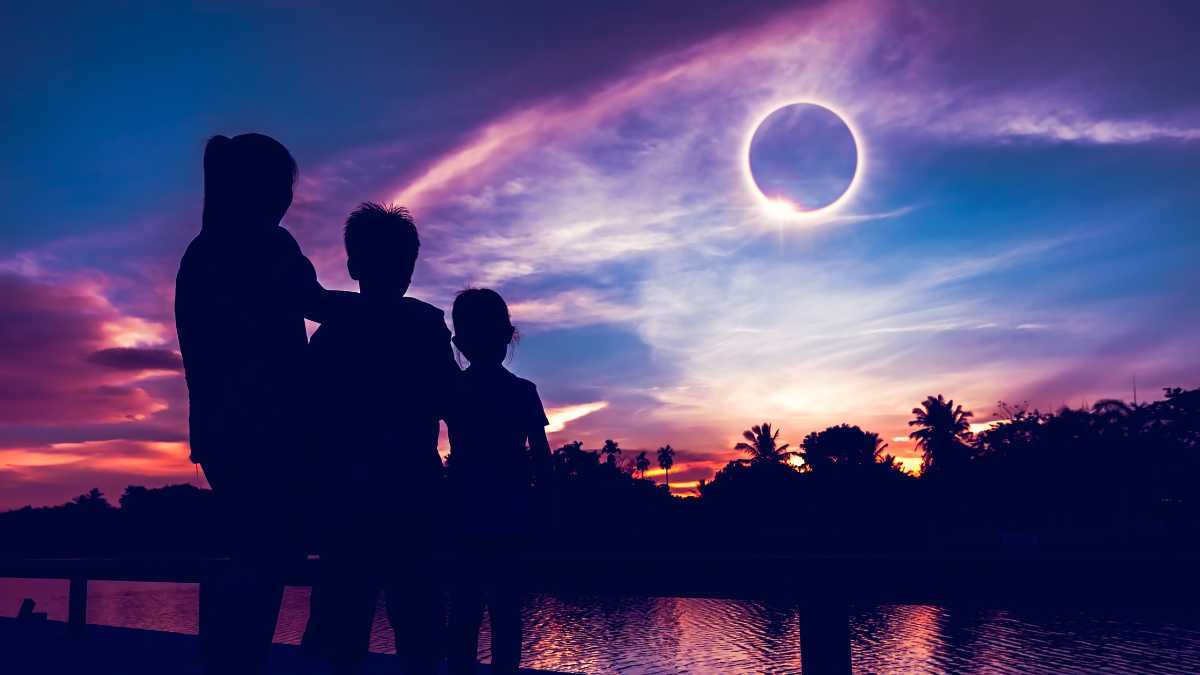Sky-gazers worldwide eagerly await the rare celestial spectacle set to occur on April 8, 2024—a total solar eclipse. However, due to geographical positioning, UAE residents may only glimpse a partial eclipse.
Understanding a Total Solar Eclipse
A total solar eclipse is a breathtaking event where the Moon positions itself perfectly between the Sun and the Earth, casting a shadow on our planet. This phenomenon plunges areas along its path into temporary darkness, resembling twilight.
The Mechanics Behind Totality
During a total solar eclipse, the Moon’s apparent size matches the Sun’s, leading to complete obscuration of the Sun’s disk. This alignment results from the Moon’s diameter being nearly 400 times smaller than the Sun’s, coinciding with its distance from Earth.
The Umbra and Penumbra: Divisions of Darkness
The shadow cast by the Moon during a solar eclipse consists of two distinct regions: the umbra and the penumbra. While the umbra represents the darkest part where the Sun is entirely obscured, the penumbra surrounds it, resulting in partial eclipses observed nearby areas.
When Will the Eclipse Peak in UAE?
Unfortunately for residents of the UAE, the total solar eclipse of April 8, 2024, will remain out of sight as it traverses North America. However, a partial eclipse will be visible, offering a unique albeit incomplete experience.
Path of Totality and Duration
The path of totality refers to the narrow strip on Earth where observers can witness a total solar eclipse. While the duration of totality varies based on location, ranging from a few seconds to around 7 minutes, the UAE won’t be within this path during the upcoming event.

Viewing Safety: Protecting Your Eyes
While witnessing a solar eclipse is a mesmerizing experience, it’s crucial to prioritize eye safety. Directly looking at the Sun, especially during partial phases, can lead to severe eye damage.
Utilizing Protective Gear
To safely view the eclipse, specialized equipment such as solar viewing glasses or handheld solar viewers is imperative. These devices ensure your eyes are shielded from harmful solar radiation, preventing potential harm.
Other Key Celestial Events
Beyond the solar eclipse 2024, UAE residents can look forward to various other celestial phenomena in the coming years.
Partial Solar Eclipses and Lunar Phenomena
Mark your calendars for future celestial events, including partial solar eclipses in August 2027 and total lunar eclipses in July 2029. Additionally, meteor showers such as the Eta Aquariid, Delta Aquariid, Perseid, Orionid, and Geminid offer captivating displays throughout the year.
Frequently Asked Questions (FAQs)
What is a solar eclipse?
A solar eclipse occurs when the Moon passes between the Sun and the Earth, casting a shadow on the Earth’s surface.
Is it safe to look at a solar eclipse with the naked eye?
No, it’s never safe to look directly at the Sun during a solar eclipse without proper eye protection as it can cause severe eye damage.
When is the next total solar eclipse visible from the UAE?
The next total solar eclipse visible from the UAE will occur on March 20, 2034.
What should I do if I want to observe a solar eclipse?
Always use certified solar viewing glasses or handheld solar viewers to safely observe a solar eclipse to protect your eyes from harmful solar radiation.
How long does totality last during a total solar eclipse?
The duration of totality during a total solar eclipse varies based on the observer’s location within the path, ranging from a few seconds to a maximum of about 7 minutes.
Are there any upcoming meteor showers visible from the UAE?
Yes, UAE residents can anticipate various meteor showers throughout the year, including the Eta Aquariid in May, Delta Aquariid in July, Perseid in August, Orionid in October, and Geminid in December.
Conclusion
While the upcoming solar eclipse of 2024 may only offer a partial view to UAE residents, it serves as a reminder of the magnificence of celestial phenomena. As we eagerly anticipate future astronomical events, let’s ensure to prioritize safety while marveling at the wonders of the cosmos.



























